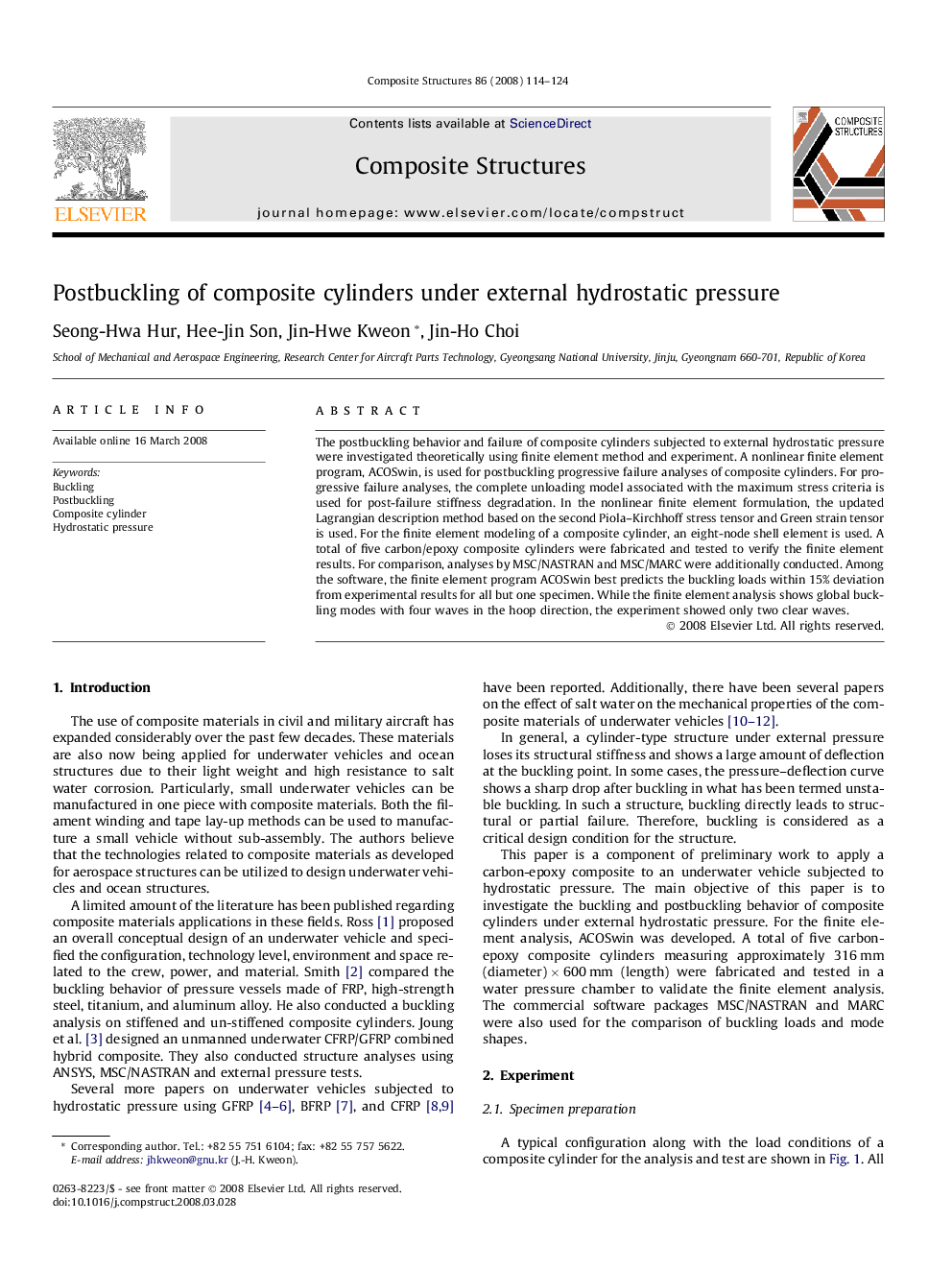| Article ID | Journal | Published Year | Pages | File Type |
|---|---|---|---|---|
| 253304 | Composite Structures | 2008 | 11 Pages |
The postbuckling behavior and failure of composite cylinders subjected to external hydrostatic pressure were investigated theoretically using finite element method and experiment. A nonlinear finite element program, ACOSwin, is used for postbuckling progressive failure analyses of composite cylinders. For progressive failure analyses, the complete unloading model associated with the maximum stress criteria is used for post-failure stiffness degradation. In the nonlinear finite element formulation, the updated Lagrangian description method based on the second Piola–Kirchhoff stress tensor and Green strain tensor is used. For the finite element modeling of a composite cylinder, an eight-node shell element is used. A total of five carbon/epoxy composite cylinders were fabricated and tested to verify the finite element results. For comparison, analyses by MSC/NASTRAN and MSC/MARC were additionally conducted. Among the software, the finite element program ACOSwin best predicts the buckling loads within 15% deviation from experimental results for all but one specimen. While the finite element analysis shows global buckling modes with four waves in the hoop direction, the experiment showed only two clear waves.
